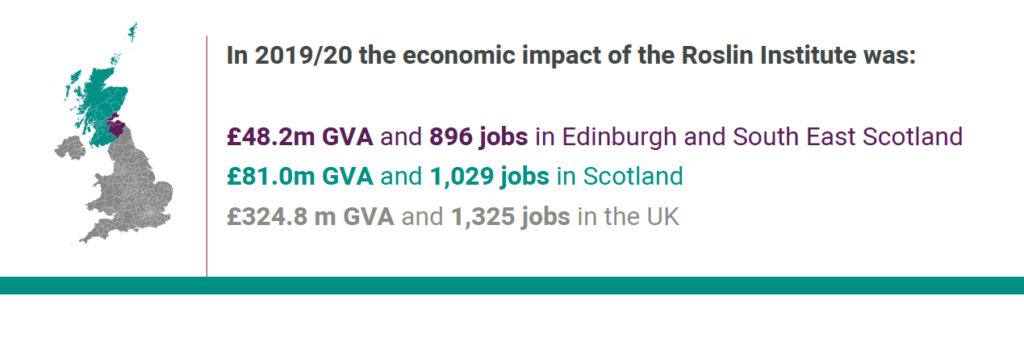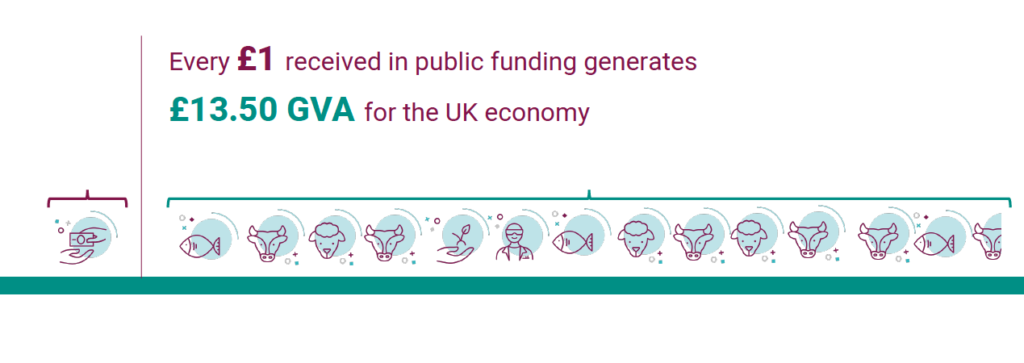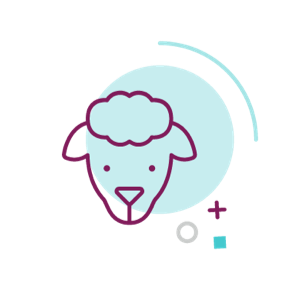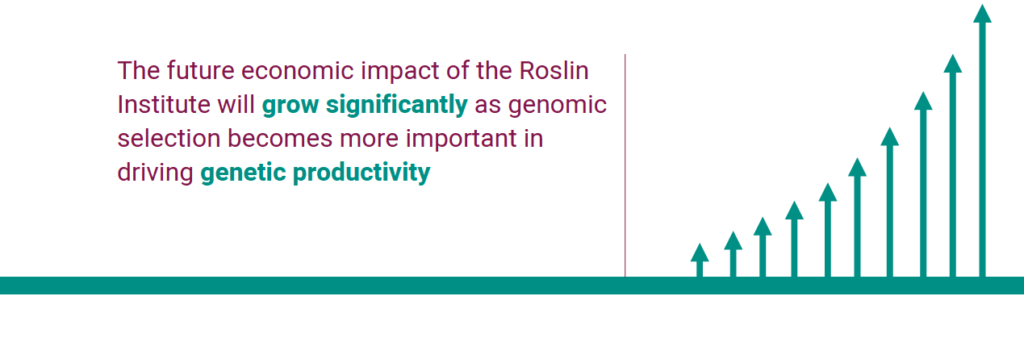
Posted 12.12.25
New Stadium to Boost Aberdeen Economy
Be it plans for a multi-sports community stadium in Aberdeen, a new home for Manchester United, or the...
1 minute read
The Roslin Institute is a world-leading centre for animal science research and has been creating a more sustainable world through fundamental research in animal genetics and health since its formation in 1993.
BiGGAR Economics was commissioned to assess the economic impact of the institution in 2021. Our study found that research carried out at the Roslin Institute contributed almost £20 billion annually to the global economy, largely through productivity improvements in agriculture and aquaculture. It also contributed to the UK, Scottish and regional economies.

This economic impact represents a significant return on investment for both the UK and Scottish Governments. It received £24.1 million in public funding. Therefore:


The Roslin Institute’s research programmes contributed to global productivity improvements in agriculture and aquaculture. The route to impact for this productivity gain lies in commercialisation of the Institute’s fundamental research through strategic relationships with some of the world’s largest genetics and animal health companies, ensuring that Roslin’s intellectual property finds its way into the gene pool of global populations of livestock. The cumulative nature of these productivity increases reflects the fact that genomic research undertaken by the Roslin Institute decades ago is still having an impact today.
The economic value of this contribution is difficult to determine with a high degree of accuracy and so the potential contribution of the Roslin has been presented as a range in this analysis. All points within the range represent a significant impact. Globally, the lower bound of the range would represent an impact of £12.5 billion and the upper bound would equate to £25.0 billion. The range average suggests that the scientific advances made at the Roslin Institute generated;
The impact of the Roslin Institute varied across different sub-sectors of agriculture. This was based on the relative genetic variation of these sub-sectors and the specialisms of the Roslin. Our analysis found that the largest contribution was made to the broilers (chicken) market. The mid-range estimate of the contribution that the Roslin made to this sub-sector was £9,360 million in 2019/20.
The study also considered the potential impact of the Roslin Institute in the future. This found that the increasing role of genomic selection in driving productivity improvements across agriculture will lead to an increase in the share of global agricultural productivity improvements that could be attributed to the Roslin. Over time, these incremental and cumulative benefits will result in the impact of the Roslin growing beyond where it is today.

More information on the economic impact of the Roslin Institute can be found through the links below:
Posted 15.06.22
Our latest news

Posted 12.12.25
New Stadium to Boost Aberdeen Economy
Be it plans for a multi-sports community stadium in Aberdeen, a new home for Manchester United, or the...
1 minute read

Posted 24.11.25
BiGGAR Economics becomes employee-owned
We are delighted to announce that BiGGAR Economics has become an employee-owned company. The shares in BiGGAR Economics...
1 minute read